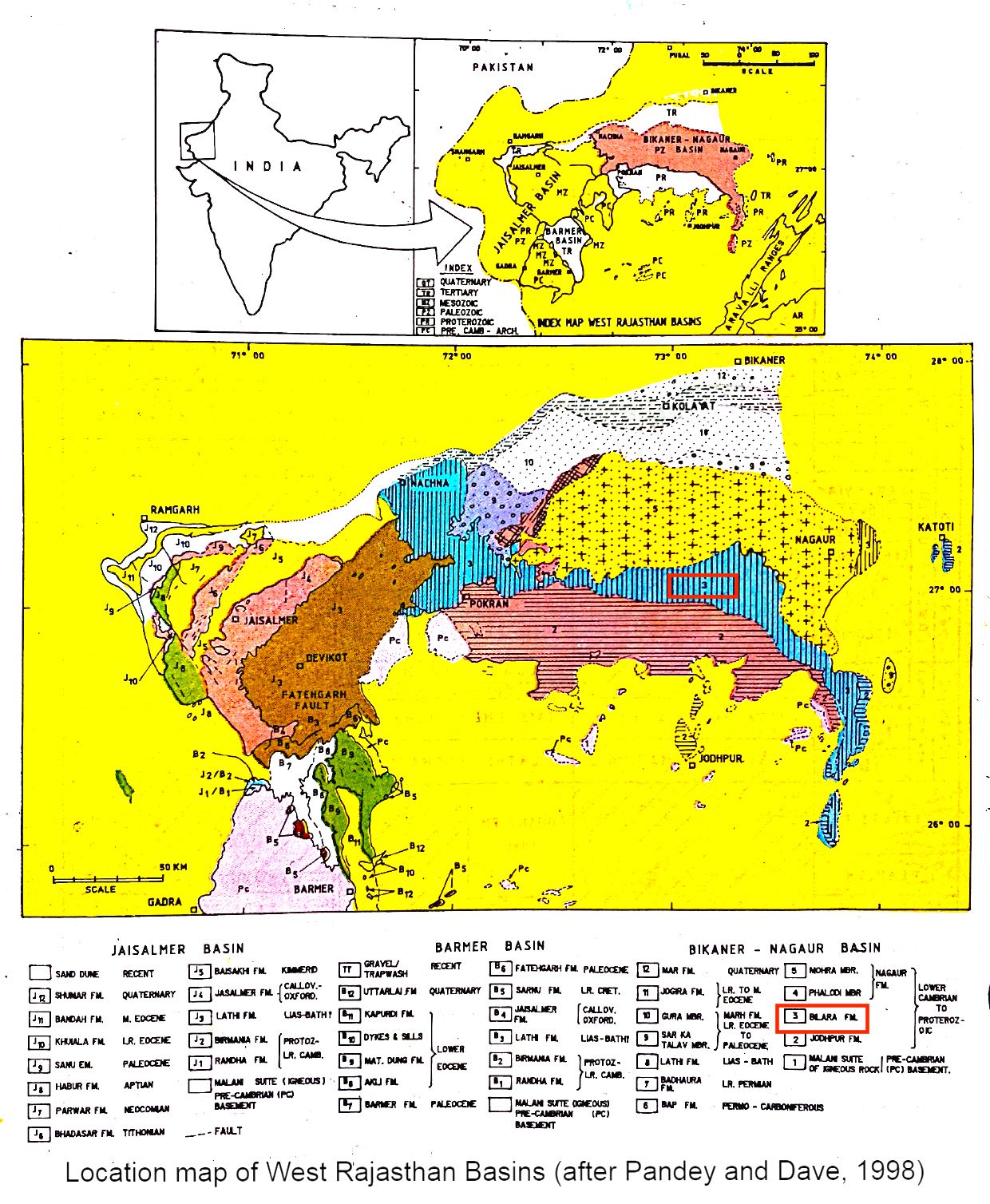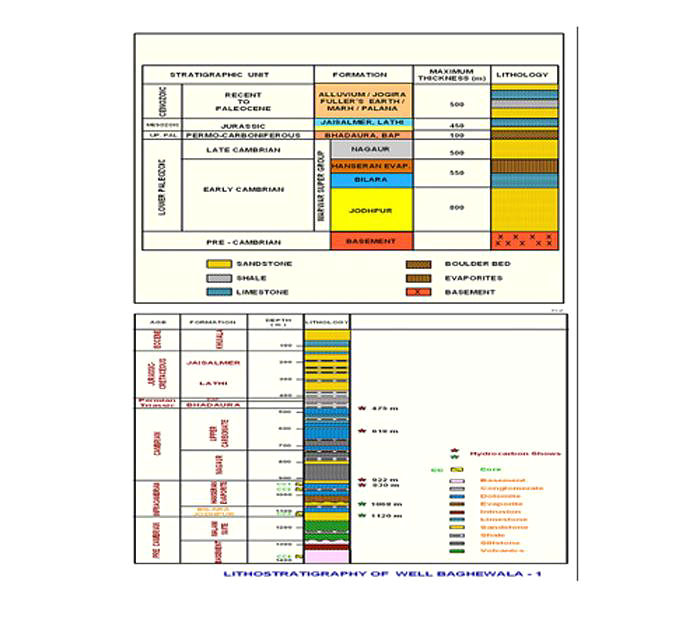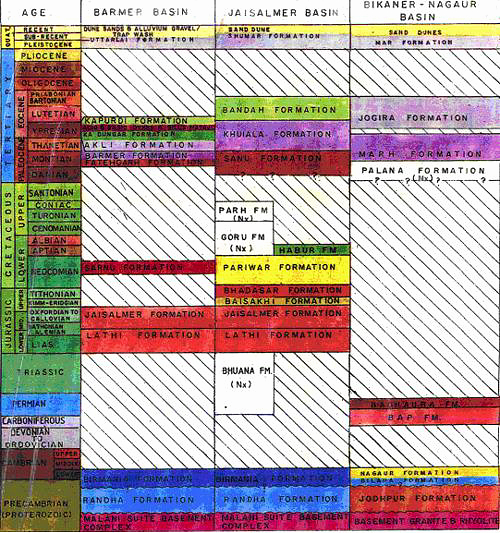Bilara Fm
Type Locality and Naming
OUTCROP: The type section exposures are seen around Bilara, Phalodi and Pokaran; The Bilara Formation occurs as detached outcrops in the sandy flats and low ridges around Bap-Nagaur. Good exposures of limestone can be observed around Isru, Tentwas, Panchori, Mundava, Rol Quazian and Deh. [Original Publication: Deopura, V. S., and Shrivastava, B.P., 1959: Progress report of the Bikaner, Jodhpur party ONGC report (unpublished)]
[Figure 1: Location map of West Rajasthan Basins (after Pandey and Dave, 1998)]
Synonyms: The Bilara Limestone exposed in type locality Bilara was mapped there and also between Bilara and Khinwasar by Deopura and Shrivastava (1959). Later on Misra and Shrivastava (1960) named the same limestones around Phalodi as Phalodi Limestone. Shrivastava and Srinivasan (1962) mapped Bilara rock unit in Bap-Nagaur area and designated it as Bilara Formation. Subsequently, Khanduri et al., (1972) carried forward the name, which was also adopted by Mishra et al., 1993.
Lithology and Thickness
Dolomitic Limestone. It is mainly carbonate unit comprise grey occasionally blue to pink colored massive, thick-bedded and compact dolomitic and cherty limestone. Its thickness is about 30-100 m.
[Figure 2: Generalized and Subsurface Stratigraphy of Bikaner-Nagaur Basin ((from dghindia.gov.in)]
Relationships and Distribution
Lower contact
The formation has unconformable contact with underlying Jodhpur Fm.
Upper contact
Dhar and Khar (1977) reported, that the formation has unconformable contact with overlying Phalodi Member of Nagaur Fm.
Regional extent
In Pokaran-Phalodi area. the Bilara Fm is represented by discontinuous outcrops. There is a zone of North-South trending small disconnected ridges in Choti-Bengti-Jemla alignment in the west and a Phalodi-Badhaura alignment in the east.
[Figure 3: Stratigraphic Correlation of Rajasthan Basins (from dghindia.gov.in)]
GeoJSON
Fossils
No microfauna have so far been reported. However, few acritarchs have been known through palynological studies carried out by Lukose and Misra (1972).
Age
Depositional setting
Additional Information


